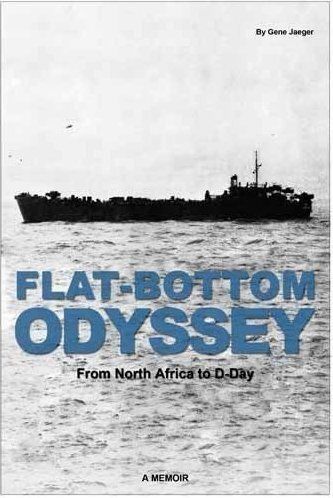Flat Bottom Odyssey
Author Gene Jaegar
Preface
The December 7, 1941 attack on Pearl Harbor confronted the United States with a unique problem. The Axis Powers had seized lands, nations and islands that must be freed. The U.S. had done a similar job in 1917-1918 with one significant difference. The Doughboys and their weapons were welcomed at European seaports; the G.I.’s were not. At the end of 1941, the European and Pacific ports were held by the enemy.
The heavy weapos needed to re-take the captured lands would have to be delivered in flat-bottomed, bow-loading ships that could load 20 Sherman tanks in Philadelphia and deliver them, under fire, on hostile beaches. The ships needed tthen are now called LST’s (Landing Ship, Tanks), but on December 7, 1941, the only LST that existed was still on a drawing board. The Pearl Harbor attack sparked a spectacular burst of productivity. The design work was completed, bottoms were laid in several shipyards throughout the U.S. and the first LST’s were launched in December 1941.
With these unique, 328-foot, flat-bottom ships coming on line, the Navy needed 1000,000 men to run them. Training for this job would call for experienced instructors and plenty of time. The Navy had neither. But the war couldn’t wait. If trained men weren’t available to run the LSTs, untrained men would have to do it. This is the story of those untrained men going into battle in untried ships; the men called upon to do on-the-job training and fight a war in the process.
Our ship, the LST 400, was commissioned in Newport News on January 7, 1943. It went into battle in Sicily six months later. Its story moves from our learning the difference between port and starboard to our first storm at sea and then to firing at enemy bombers and sweating U-Boat attacks. The raw, young crew that commissioned LST 400 was soon involved in the battle of North Africa followed by D-Day landings at Sicily, Italy and Normandy. The war in Europe won, these seasoned, but still youthful, veterans were immediately called upon to form the nucleus of new crews needed to storm Japanese beaches. This is a story of the horror and absurdity of war. It’s also a story of the youth who endured it with spirit and even, God knows how, with humor.
Gene Jaeger
October 2009
